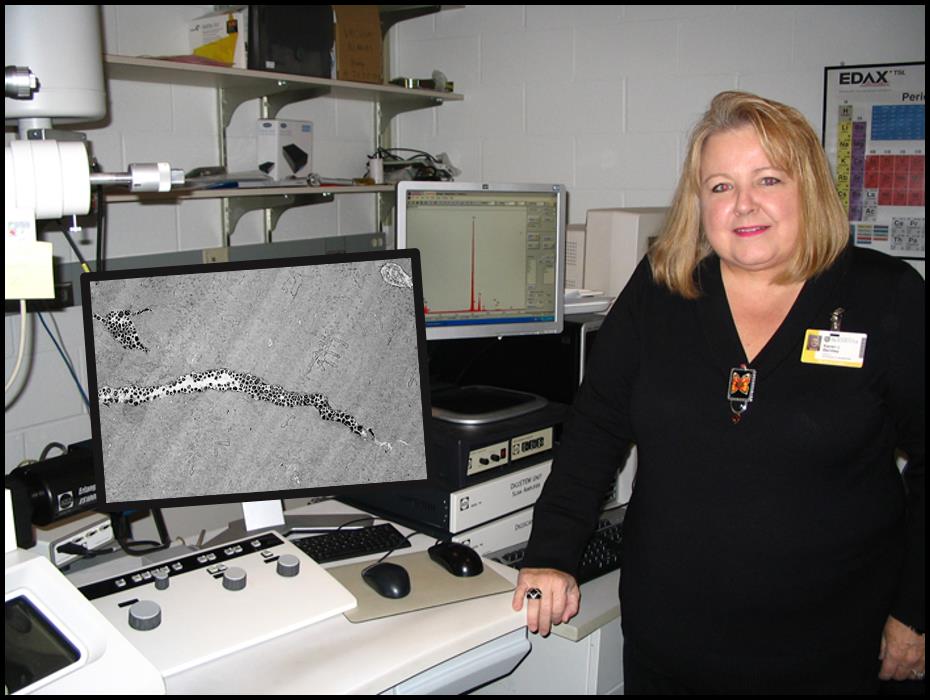Pathology Graduate Student Wins Travel Award for Research Project
Second-year Pathology graduate student Madison Doolittle won second place in the School of Medicine and Dentistry’s graduate student poster competition on May 17.
Bentley Discovers Bacterial Phenomenon in Bone Implant Infections
Karen de Mesy Bentley (formerly Jensen), M.S., director of the Electron Microscopy Shared Resource Laboratory and faculty associate in the Department of Pathology and Laboratory Medicine, has discovered something new about the behavior of Staphylococcus aureus bacteria and why it may resist antibiotic treatment and recur in patients who have had a hip or joint implant.
Cancer Biology, thanks to Green Lizards
What can green lizards and “dark matter” teach us about cancer?
Pathology Graduate Student Awarded in Three-Minute Thesis Event
Congratulations to Sarah Catheline for winning the People’s Choice Award at the University of Rochester’s Three Minute Thesis public competition held on May 11 at URMC.
Gene Study Points Researchers to New Pathway for Leukemia
Leukemia is one of the hardest cancers to treat, but scientists have discovered a new, targetable pathway in one of the worst subtypes of the disease.





